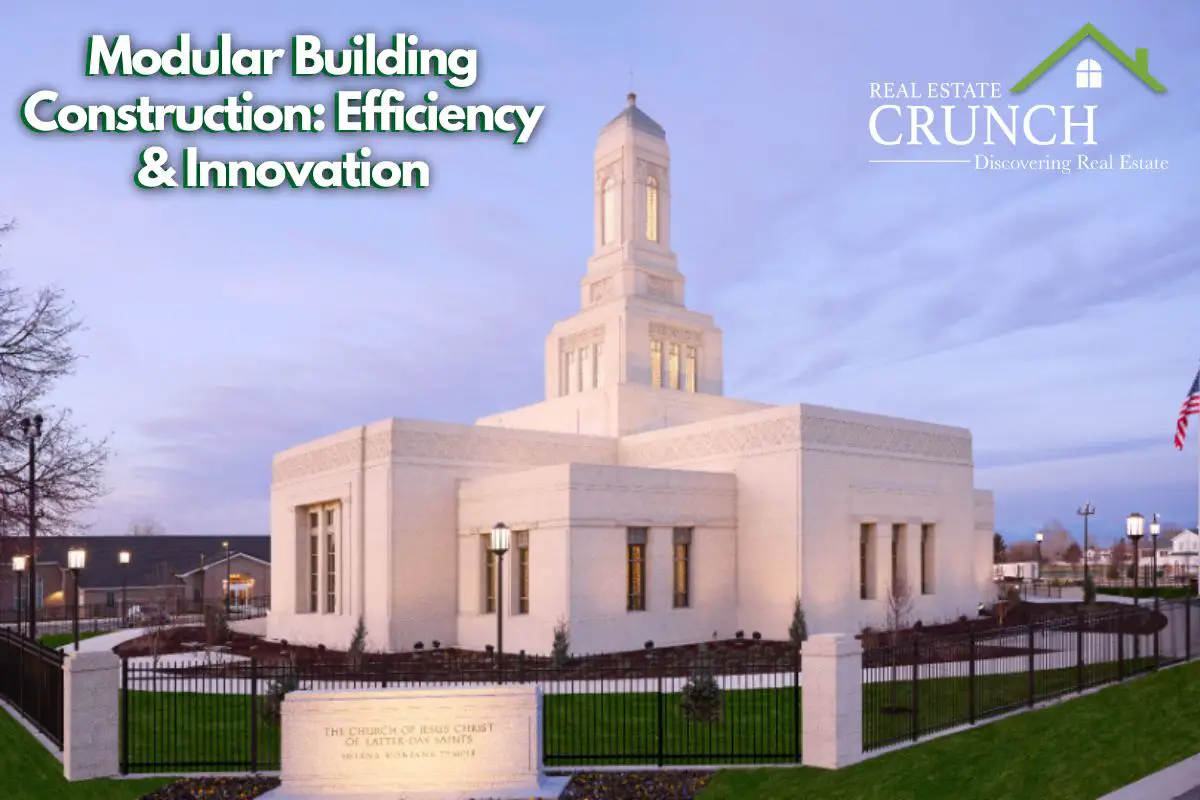Throughout my home decor and furniture manufacturing career, I’ve visited various manufacturing facilities. This exposure has given me a deep appreciation for the efficiencies and innovations possible within manufacturing environments, particularly in constructing homes and buildings using modular techniques.
Modular construction involves creating buildings in a factory setting according to specific designs or custom requirements before assembling them on-site. This process allows for a significant portion of a building’s construction to be completed indoors, which presents numerous advantages. In this exploration, we delve into the benefits of modular construction for buildings, drawing from my personal insights and industry experiences.
Table of Contents
- Advantages Of Modular Building Construction
- Modular Construction Case Study: The Helena Montana LDS Temple
- Related Questions
Advantages Of Modular Building Construction
Modular construction has gained traction in recent discussions due to its numerous perceived benefits. There are many reasons why people like having a building built mostly indoors before being constructed outdoors.
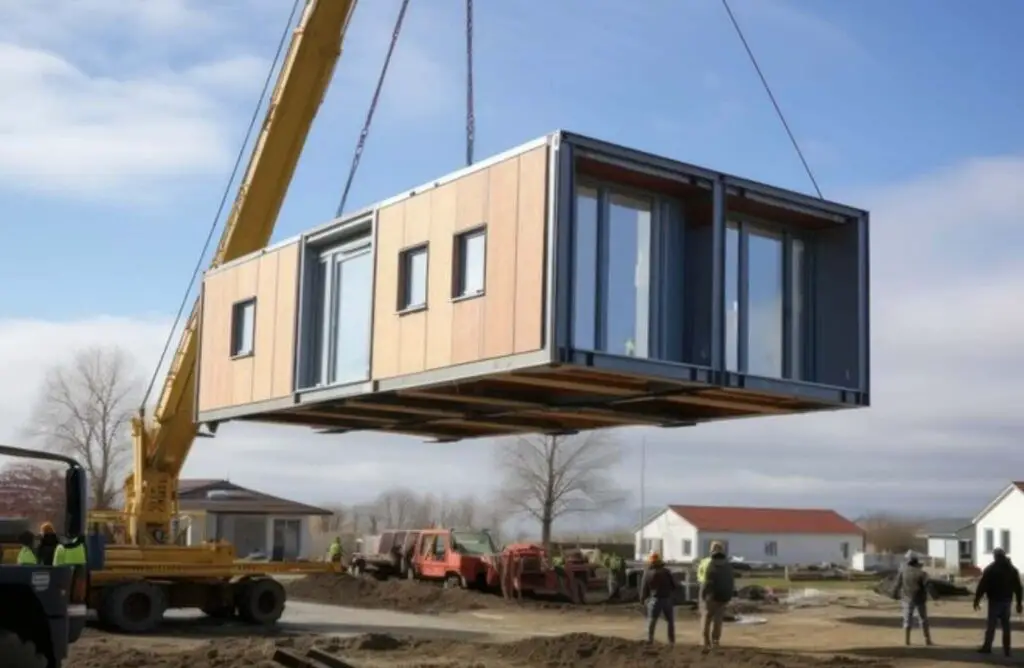
Below are some of the key advantages I’ve observed:
Built Indoors
One of the most apparent benefits of modular construction is the ability to build large structure components indoors. This indoor setting protects the building process from adverse weather conditions such as rain, snow, and wind.
This is particularly beneficial for materials like wood, which can suffer damage or degradation if exposed to moisture or left outside. Indoor construction allows for a controlled environment, ensuring materials remain in optimal condition.
Reduced Waste And Material Cost Savings
Modular construction tends to generate less waste compared to traditional building methods. This efficiency arises from better material management and the reuse of materials across projects, reducing overall waste.
Factories working on multiple buildings simultaneously can purchase materials in bulk, achieving cost savings and minimizing waste. Such economies of scale are not easily replicable in traditional construction settings.
Expedited Building Process
The modular approach can significantly speed up the construction timeline, with projects often completed up to 70% faster than traditional methods. This time-saving aspect is a substantial advantage, offering quicker occupancy and reducing the drawn-out nature commonly associated with building homes.
Reduced Transportation On Site
Contrary to what some might assume, modular construction can lead to fewer vehicle movements at the site. Since modular homes are assembled quickly, the method results in up to 90% less vehicle traffic on-site, minimizing disruptions for other site uses, whether for offices or homes.
Retention Of Skilled Workers
In regions experiencing labor shortages, the modular construction industry can maintain a stable workforce by providing consistent employment opportunities. Factory settings allow workers to engage in continuous projects without the instability of moving from project to project. A
Additionally, the indoor work environment can appeal more to tradespeople, who might prefer it over outdoor conditions subject to weather variability.
Leveraging Technology
The indoor factory setting of modular construction facilitates the full utilization of advanced technology and machinery, enhancing precision and efficiency. This technological advantage is pivotal, allowing for higher quality control and innovation in the building process.
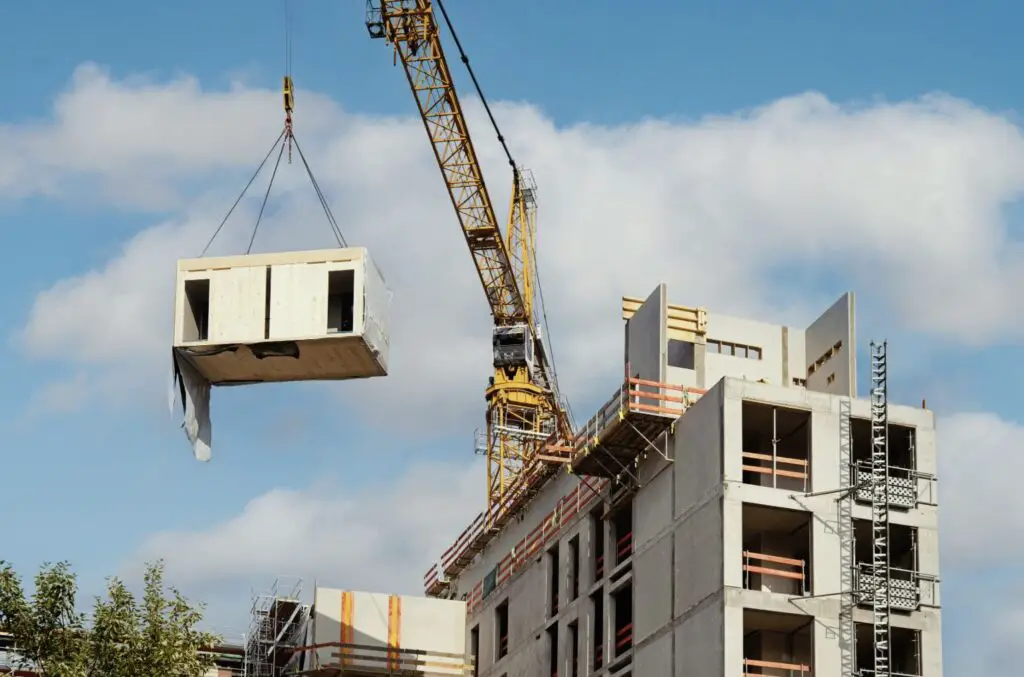
Modular Construction Case Study: The Helena Montana LDS Temple
The Church of Jesus Christ of Latter-day Saints’ decision to build the Helena Montana Temple through modular construction offers a compelling case study of the transformative potential of modular methods for erecting homes and structures worldwide.
This project stands out not just for its size—spanning over 10,000 square feet and rising above 96 feet—but also as a testament to modular construction’s scalability and efficiency to complex buildings.
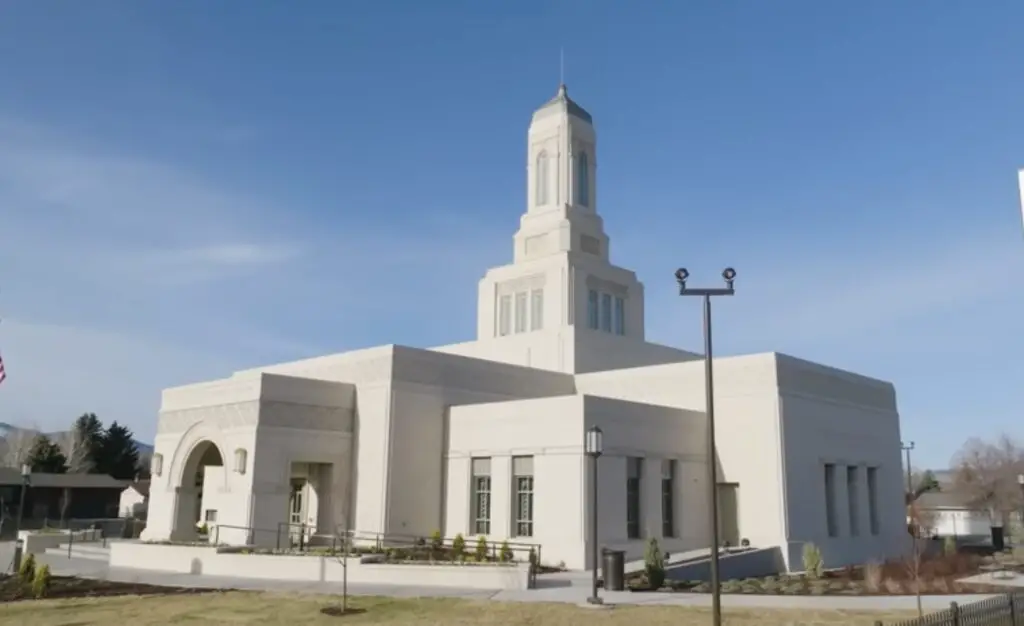
Collaboration With BLOX For Construction
For this ambitious project, the Church selected BLOX, an Alabama-based company renowned for its expertise in modular construction, particularly in healthcare facilities across the United States.
The Helena Montana Temple represents BLOX’s inaugural project with the Church, highlighting a significant pivot from traditional, on-site temple constructions to a more innovative, modular approach.
Traditionally, each building project began from scratch on-site, a time-consuming process that limits the ability to leverage economies of scale, whereby the cost per unit decreases as production increases.
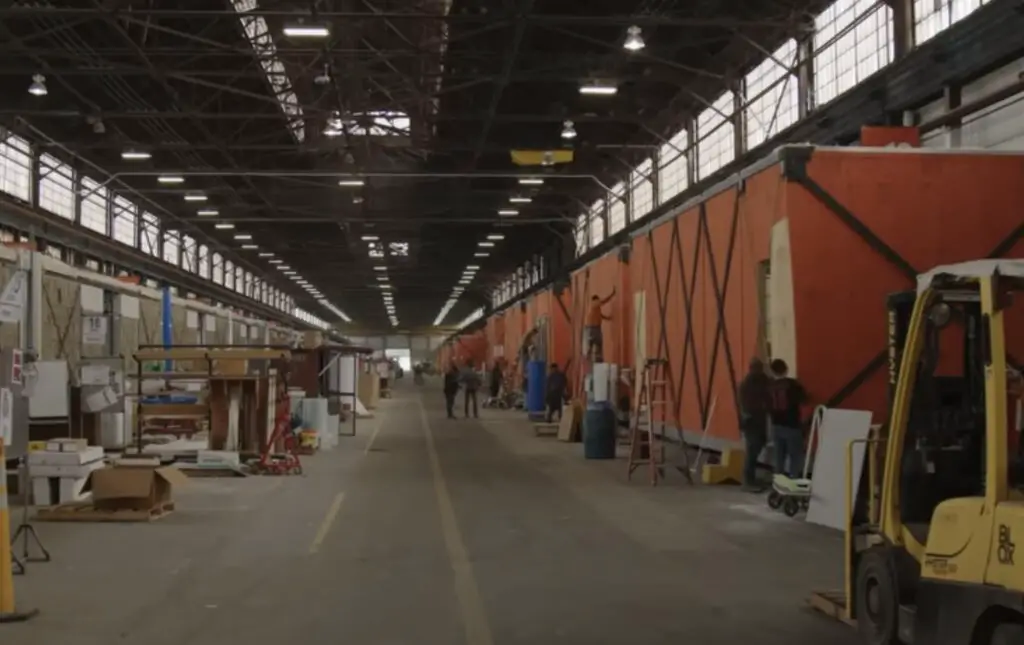
Fabrication Of Temple Modules
The temple was fabricated in 25 distinct segments at the BLOX facility in Alabama. Each module was carefully shrink-wrapped to ensure protection from the elements during transit and transported to the 4.8-acre construction site in Helena.
This method underscores the advantages of modular construction in protecting materials and ensuring quality control throughout the transportation process.
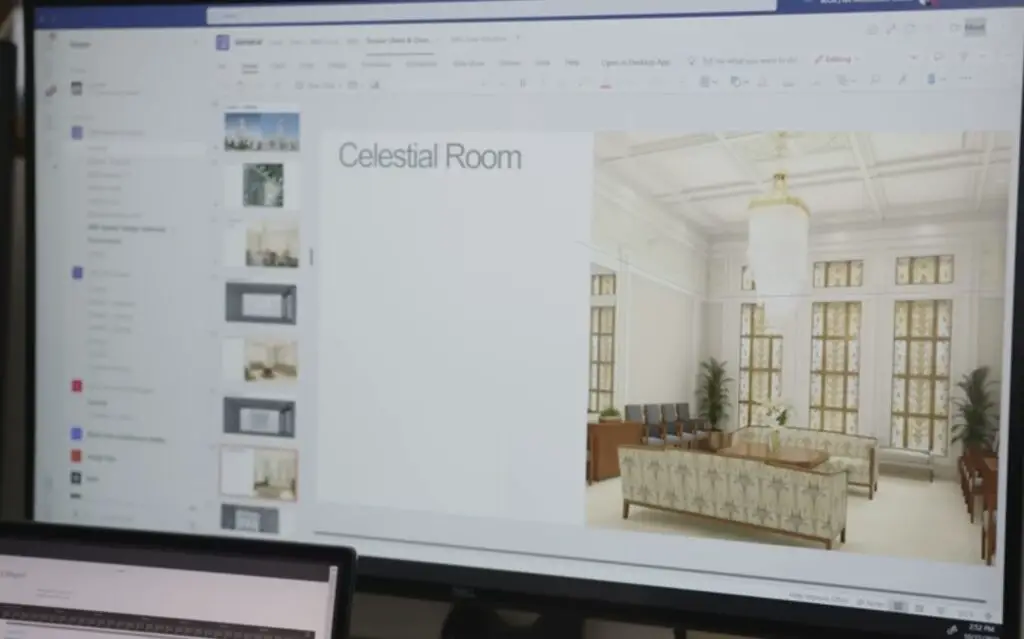
Assembly Of Modular Components
Upon arrival in Montana, specialists meticulously joined the 25 modules to form the temple. This phase included integrating the electrical, plumbing, heating, and ventilation systems and adding the exterior art deco stone cladding—all completed on-site.
The indoor manufacturing process, equipped with high-tech machinery and precision methods, ensured all parts aligned flawlessly upon assembly. This precision is a hallmark of modular construction, showcasing its capability to achieve a seamless fit and finish comparable to traditional construction methods but with added efficiency and control.
The modular construction of the Helena, Montana, LDS Temple exemplifies the practical benefits of this approach and illustrates its potential to redefine the construction industry. By embracing modular techniques, projects can enjoy reduced construction times, lower costs, and minimized environmental impact without compromising on quality or design integrity.
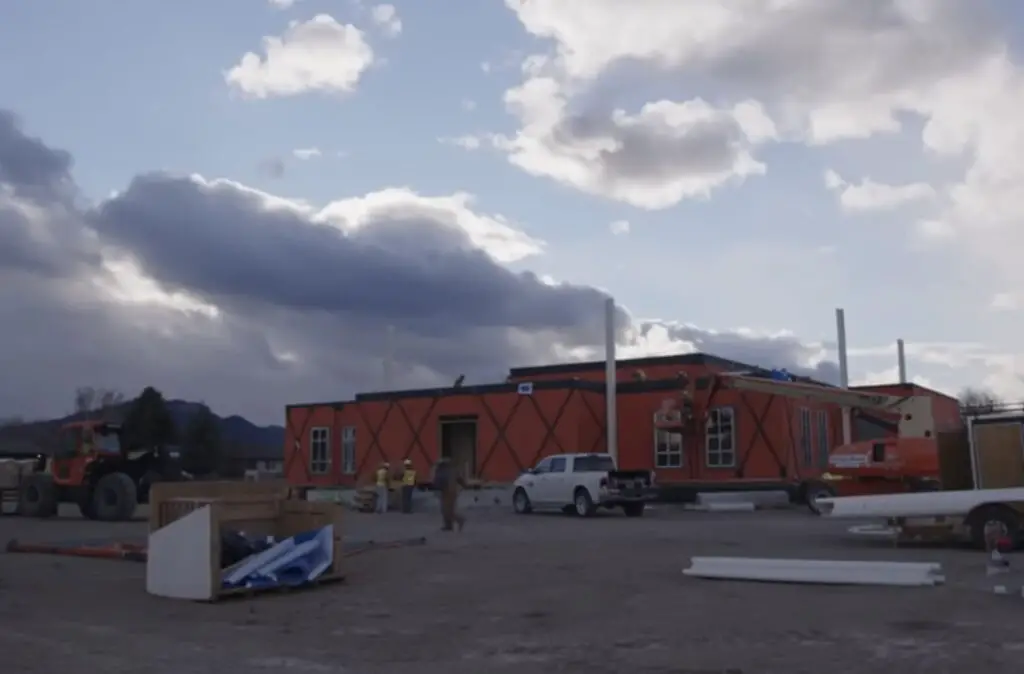
My experience in the manufacturing sector has solidified my belief in the efficiency of factory-based production. Modular construction embodies this principle, offering a streamlined process that significantly reduces waste and costs while maintaining high quality.
Despite the slower-than-expected adoption of modular construction within the broader construction and housing market, I remain a staunch advocate for this method.

My conviction is rooted in my manufacturing background, where I’ve witnessed the tangible benefits of producing high-quality products with precision tools in controlled environments. I am confident that the modular construction industry will continue to expand and evolve, becoming increasingly significant.
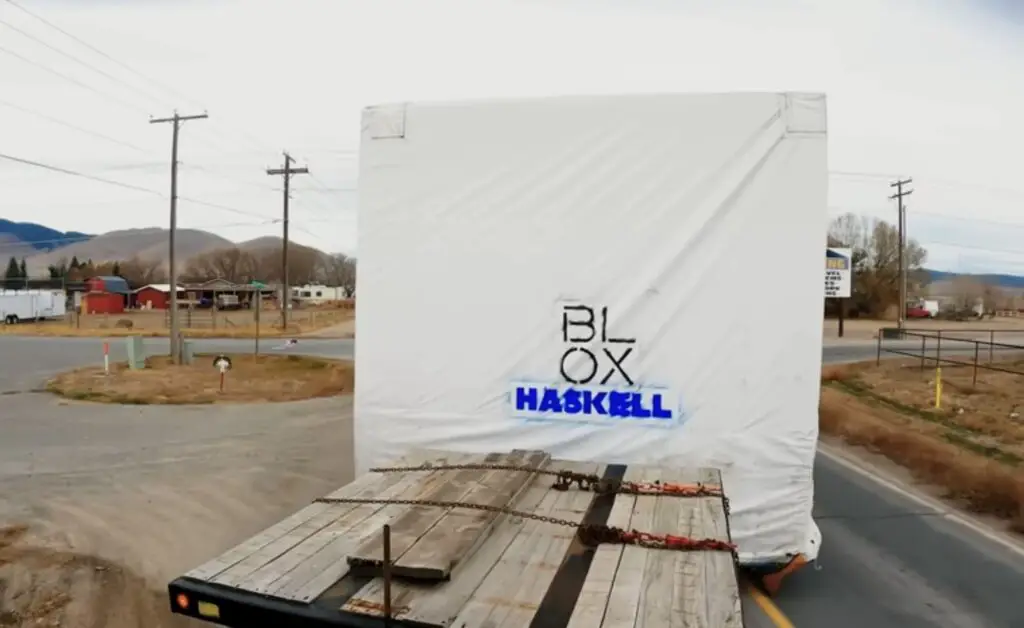
Modular construction offers many benefits, from reduced waste and material costs to expedited building timelines and improved labor stability. As technology advances and the industry matures, I anticipate modular construction will play a pivotal role in shaping the future of building and construction, demonstrating that innovation and efficiency can coexist harmoniously in the pursuit of quality and sustainability.
Real Estate Crunch gives you real property and real estate information and advice. We offer a free monthly newsletter; you can sign up for our newsletter by clicking here.
We also have a weekly podcast called “Real Estate Crunch,” on all major podcast platforms. Listen to our podcast by clicking here.
Follow us on our social media platforms – Facebook and Instagram.
Related Questions
What Is The Target Customer Segment For Smart Homes?
When thinking about a smart home, it is good to understand what type of people are drawn to want to purchase and live in a smart home. The reasons people may want to live in a smart home can be as varied as the type of technology they want inside their home.
By clicking here, you can read more about What Is The Target Customer Segment For Smart Homes?.
What Is An Improvement Assessment In Property?
The improvement assessment is how your property’s improvements are assessed for tax purposes. Each county in the United States may have different rules for assessing property improvements, so you need to understand how your county will assess the improvements you have made on the land.
By clicking here, you can read more about What Is An Improvement Assessment in Property?
S2A Modular Electrical Sustainability Homes
S2A Modular Homes is looking to build eco-sustainable homes. We love that they are working to find ways to save the environment while building homes that not only look great but are also self-sufficient when it comes to electricity. They are working to do this in several ways, one of which is through solar panels and the Tesla Powerwall.
By clicking here, you can read more about S2A Modular Electrical Sustainability Homes.

